Wrinkles around the mouth are among the earliest and most prominent signs of aging. Known for their persistence and visibility, these lines often take shape as smile creases in the corners of the mouth, cheek lines, or vertical grooves above the upper lip. For many, these lines—whether they appear as faint fine lines around the mouth or as deep creases—are a source of self-consciousness. Yet, while the cosmetic industry offers an endless stream of surgical interventions and injectables, growing numbers of individuals are seeking gentler, evidence-based, and more natural approaches. Understanding how to get rid of wrinkles around the mouth naturally requires not only knowledge of skin biology but also a commitment to consistent care and a nuanced look at what truly works.
You may also like: How to Choose Skin Care for Fine Lines: Evidence-Based Tips for Healthier, Younger-Looking Skin
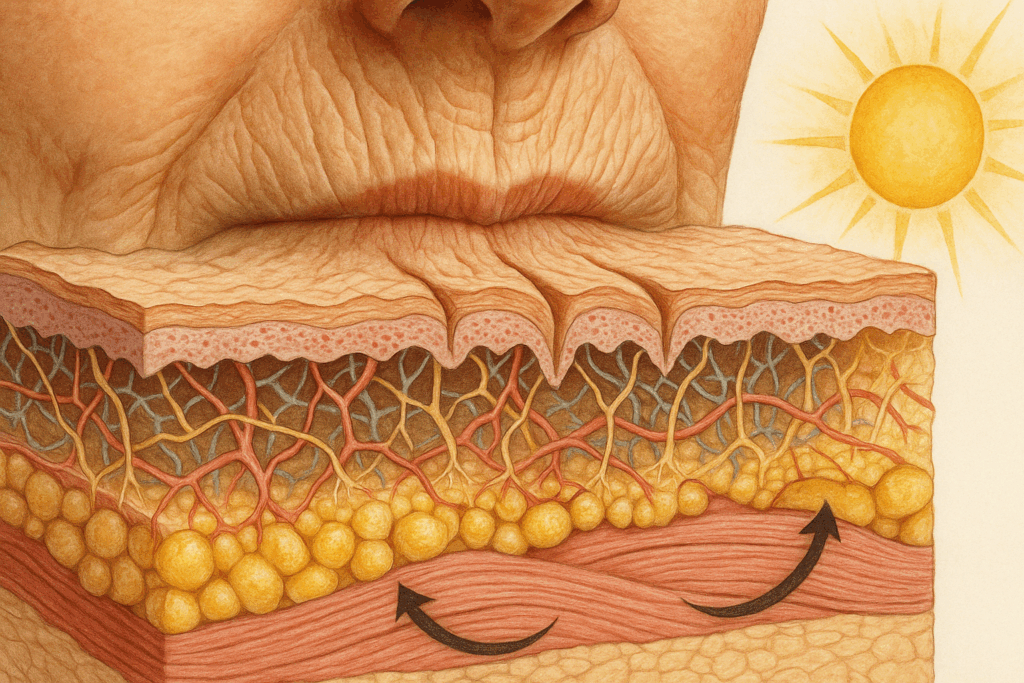
Understanding the Anatomy of Mouth Wrinkles
Before diving into natural treatments, it’s essential to understand why these lines form in the first place. The skin around the mouth is thinner and more mobile than many other parts of the face, making it especially vulnerable to repeated movement, sun exposure, and collagen loss. As we age, our bodies produce less collagen and elastin—the proteins responsible for keeping skin plump and resilient. This decrease accelerates the formation of smile lines, lines next to the mouth, and even deep creases around the mouth.
Repetitive muscle movement from everyday expressions, such as laughing, frowning, or pursing the lips, further deepens these lines over time. Environmental factors, such as UV damage, smoking, and pollution, also contribute to the breakdown of the skin’s support structure. In addition, lifestyle choices—like poor diet, inadequate hydration, and lack of sleep—can hasten the development of mouth frown lines and creases around the mouth.
The distinction between fine lines and deep creases is significant. Fine lines around the mouth often appear first, subtle and superficial, but if left unaddressed, they can evolve into more pronounced, deeper lines. Therefore, timely intervention and preventive strategies are key to reducing their appearance naturally.

The Role of Nutrition in Skin Health and Wrinkle Prevention
Nutrition plays a foundational role in skin health. The skin, being the body’s largest organ, reflects the state of internal wellness. A nutrient-rich diet can enhance skin elasticity and hydration, thus minimizing the appearance of mouth lines and wrinkle around the mouth. Antioxidants, particularly vitamins A, C, and E, help neutralize free radicals that accelerate skin aging. These vitamins support collagen production, brighten skin tone, and reduce inflammation—all of which contribute to smoothing out lines from nose to mouth.
Collagen-boosting foods such as bone broth, leafy greens, eggs, citrus fruits, and berries should be part of a daily dietary routine. These foods contain proline, glycine, and vitamin C, which are all essential components for the body’s natural collagen synthesis. Zinc and copper also play supporting roles in maintaining skin structure and aiding in wound healing, which is particularly important for reducing creases around mouth areas.
Hydration is another critical element. Dehydrated skin tends to look more wrinkled and dull. Consuming sufficient water daily—ideally eight or more glasses—supports the skin’s moisture barrier and helps maintain its suppleness. Herbal teas, water-rich fruits like watermelon, and hydrating vegetables like cucumber can complement this goal.
Additionally, reducing the intake of sugar and processed foods is essential, as these can trigger glycation, a process that weakens collagen and elastin. By embracing a whole-foods-based, anti-inflammatory diet, individuals can significantly influence the progression and visibility of fine lines around mouth areas.
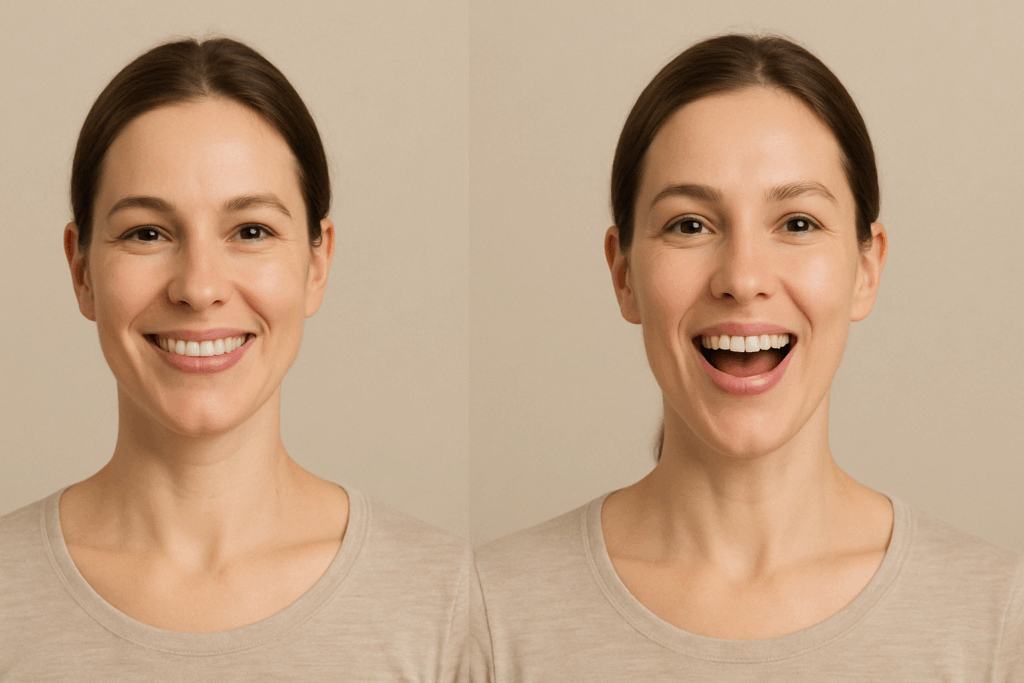
Facial Exercises to Naturally Tone and Lift the Mouth Area
While it may sound surprising, targeted facial exercises—sometimes referred to as facial yoga—can offer a non-invasive solution for those seeking how to get rid of lines around mouth without surgery. These exercises work by strengthening the underlying muscles, promoting circulation, and encouraging lymphatic drainage.
One particularly effective method involves pressing the lips together tightly, then smiling widely without separating the lips. Holding this pose for ten seconds and repeating it several times a day helps tone the orbicularis oris muscle that surrounds the mouth. Another technique, known as the “O” exercise, involves forming an “O” shape with the mouth, then trying to smile while holding the shape. This engages both the cheeks and mouth crease areas, helping reduce sagging.
Scientific studies are beginning to validate the benefits of facial exercises for reducing signs of aging. Regular use may contribute to a more youthful appearance by lifting drooping skin and softening deep creases around mouth regions. As with physical fitness, consistency is crucial. Results may not be immediate, but over several weeks to months, improvements in skin firmness and the visibility of lines on the side of the mouth can be observed.
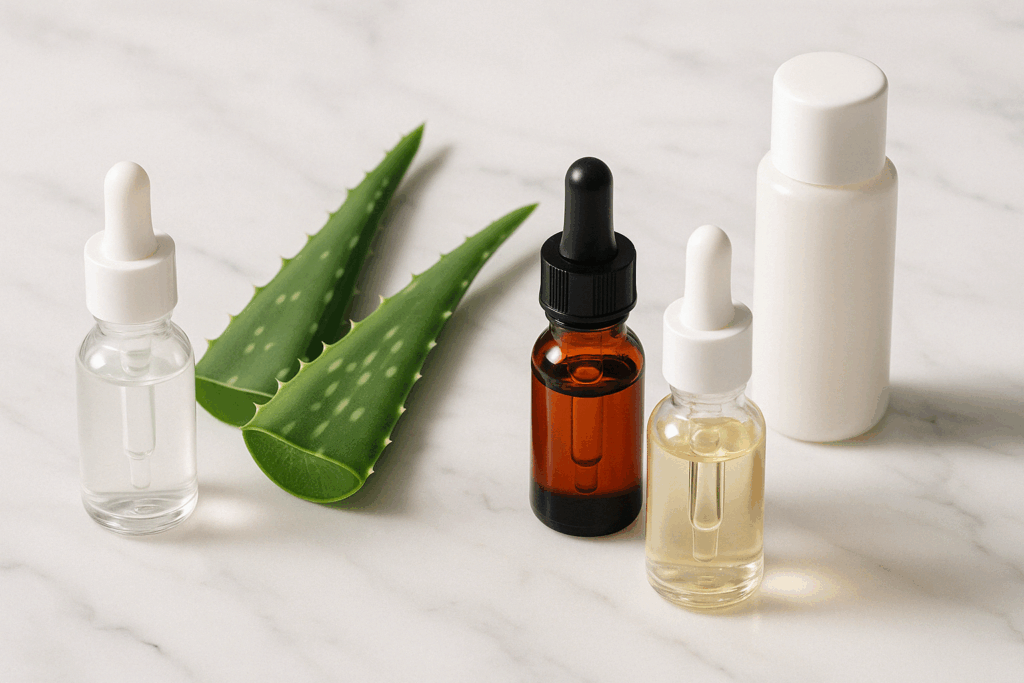
Moisturizers and Natural Topicals for Mouth Wrinkle Reduction
Moisture is a crucial factor in managing and minimizing the appearance of mouth wrinkles. Skin that is well-hydrated not only appears plumper and healthier but is also more resilient to environmental stressors. Choosing the right natural moisturizers can make a profound difference in the effort to reduce mouth frown lines and smile creases in the corners of the mouth.
Hyaluronic acid is a naturally occurring substance in the body that retains up to 1,000 times its weight in water. When applied topically through serums or moisturizers, it can provide immediate smoothing effects and gradually improve fine lines around mouth areas. Aloe vera is another exceptional ingredient known for its anti-inflammatory and hydrating properties. When applied regularly, it helps calm the skin and encourage healing of micro-damage that may contribute to wrinkle formation.
Plant oils such as rosehip seed oil, jojoba oil, and argan oil are rich in essential fatty acids and antioxidants. These oils nourish the skin barrier and may reduce the depth of existing lines around mouth areas. Vitamin C serums, when used in conjunction with these oils, can offer additional benefits by stimulating collagen production and brightening the complexion.
While over-the-counter creams often boast anti-aging properties, those containing naturally derived retinoids, peptides, and niacinamide offer a more evidence-based route without resorting to synthetic additives. These compounds support cellular turnover and improve skin texture, leading to gradual softening of mouth lines.

Sun Protection as a Preventive Strategy
One of the most effective, yet often overlooked strategies for preserving youthful skin and preventing cheek lines and lines between nose and mouth is sun protection. Ultraviolet (UV) radiation is a major contributor to premature skin aging, commonly referred to as photoaging. UV rays degrade collagen fibers, weaken skin elasticity, and contribute to the formation of deep creases around mouth areas.
Wearing a broad-spectrum sunscreen daily—ideally with an SPF of 30 or higher—is essential, even on cloudy days or while indoors near windows. Mineral-based sunscreens containing zinc oxide or titanium dioxide provide physical protection and are less likely to irritate sensitive skin. Incorporating sunscreen into your morning skincare routine, particularly around the lips and chin, can significantly reduce the development of lines on the side of the mouth over time.
Beyond sunscreen, wearing wide-brimmed hats, using UV-blocking sunglasses, and seeking shade during peak sun hours are all additional strategies to minimize UV exposure. Daily application of lip balm with SPF can also help prevent vertical lines from forming above the lips. These preventive measures, when practiced consistently, contribute to reducing the appearance of fine lines around the mouth naturally.
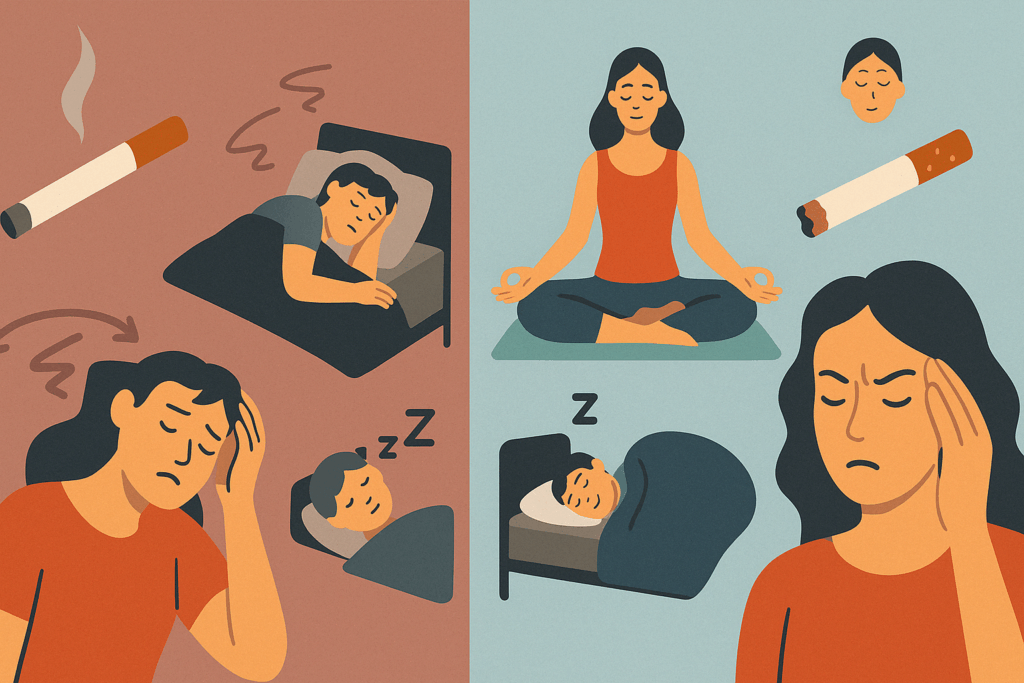
Lifestyle Habits That Influence Wrinkle Formation
In the quest to get rid of laugh lines and mouth wrinkles, lifestyle choices can either support or sabotage progress. Smoking is a well-documented accelerant of wrinkle formation. The repeated pursing of the lips while inhaling, combined with the introduction of toxic chemicals, causes collagen degradation and contributes to deep mouth creases. Quitting smoking is one of the most impactful changes a person can make for both skin health and overall wellness.
Sleep also plays an integral role. During deep sleep, the body repairs tissue and releases growth hormone, both of which support collagen regeneration. Sleeping on the stomach or side, however, can contribute to sleep lines that etch into the skin over time. Switching to a silk pillowcase and sleeping on the back can reduce mechanical stress on the skin, particularly in areas prone to lines from nose to mouth.
Stress management is equally important. Chronic stress elevates cortisol levels, which can break down skin’s structural proteins and increase inflammation. Engaging in activities such as yoga, meditation, or even simple deep-breathing exercises can help mitigate these effects and create a more balanced internal environment that supports skin resilience.
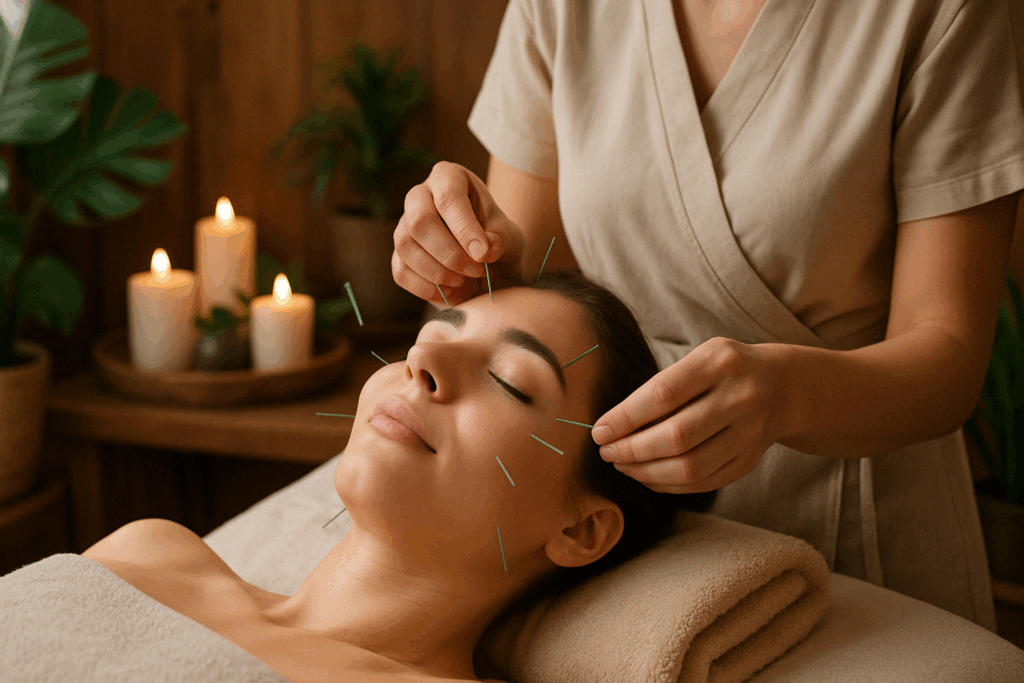
Holistic Therapies and Natural Treatments Backed by Science
In recent years, several holistic approaches have emerged as promising treatments for wrinkles around the mouth, offering a balance between tradition and modern science. Acupuncture, for instance, has been shown to improve circulation and stimulate collagen production in facial tissues. When performed by a licensed practitioner, facial acupuncture can gradually reduce the depth of lines between nose and mouth while improving overall skin tone and elasticity.
Microneedling is another natural yet science-backed technique. This procedure involves creating micro-injuries in the skin using fine needles, which trigger the body’s wound-healing process and encourage collagen synthesis. Home dermarollers can be used carefully to support smoother texture and reduce fine lines around mouth regions, though professional treatments tend to yield more significant results.
Additionally, botanical peels and natural exfoliants made from fruit enzymes, such as papaya or pineapple, can be used to dissolve dead skin cells and stimulate renewal. Regular exfoliation helps reveal fresher skin and can reduce the visibility of existing mouth lines over time. These natural treatments offer a gentler alternative to chemical peels, making them suitable for those with sensitive or aging skin.
Consistent Routine and Patience: The Key to Lasting Results
A common challenge in natural skincare is the expectation of immediate results. Unlike surgical interventions or fillers, holistic approaches require time and consistency. Developing a personalized routine that includes a nutrient-rich diet, targeted facial exercises, adequate hydration, and regular use of natural topicals can gradually reduce the appearance of mouth wrinkles, lines on chin areas, and creases around the mouth.
Tracking progress through photos or journals can help reinforce motivation and highlight improvements that may be too subtle to notice day-to-day. Moreover, treating the skin with kindness—through gentle cleansing, avoiding harsh scrubs, and applying products with clean hands—prevents irritation and supports the skin’s natural renewal processes. A holistic approach also involves acknowledging and accepting the natural aging process while still investing in practices that support healthy, vibrant skin.
Frequently Asked Questions: Natural Ways to Reduce Mouth Wrinkles and Fine Lines
1. Can facial massage really help reduce lines around the mouth over time?
Yes, regular facial massage can play a significant role in minimizing lines around the mouth. By stimulating blood flow and encouraging lymphatic drainage, massage promotes nutrient delivery and reduces puffiness in the mouth area. When performed correctly, it can help soften deep creases around the mouth and improve the appearance of fine lines around the mouth naturally. Techniques using upward strokes with natural oils like rosehip or argan can offer added nourishment while increasing skin elasticity. Over time, consistent facial massage may visibly reduce smile creases in the corners of the mouth and improve overall facial tone.
2. What are the psychological effects of developing visible mouth wrinkles?
The emergence of mouth wrinkles, especially lines on the side of the mouth or mouth frown lines, can impact self-esteem and social confidence. Many people report feeling older than their actual age when they notice new creases around the mouth. In a culture that often emphasizes youthfulness, visible lines—such as those between the nose and mouth—can trigger emotional distress or preoccupation with appearance. This can lead some individuals to pursue aggressive treatments before trying more sustainable or natural options. Understanding how to reduce lines around the mouth in a holistic way can empower people to make choices that support both emotional and physical well-being.
3. Are there any advanced dermonutrients that help reduce creases around the mouth?
Yes, recent advances in dermonutrition have highlighted several promising ingredients. Nutrients such as astaxanthin, a powerful antioxidant derived from algae, and pycnogenol, an extract from French maritime pine bark, have been studied for their ability to reduce oxidative damage and improve skin elasticity. These compounds may help reduce the depth of cheek lines and enhance hydration in the perioral region. Additionally, collagen peptides taken orally have shown potential in clinical studies to diminish lines from nose to mouth by supporting dermal density. While diet alone cannot fully remove wrinkles around the mouth, combining these dermonutrients with topical care can yield synergistic results.
4. How can tech-related habits contribute to fine lines around the mouth?
The phenomenon known as “tech neck” doesn’t just affect the neck—it also contributes to premature mouth lines. Constant downward glancing at smartphones or laptops places repetitive strain on facial muscles, especially those around the chin and lower cheeks. This sustained tension can deepen lines next to the mouth and even exacerbate mouth creases. Over time, these habits reinforce unfavorable postures and reduce facial tone. Being mindful of ergonomics, taking screen breaks, and performing facial relaxation exercises can mitigate this modern contributor to wrinkle around mouth areas.
5. Is there a connection between breathing habits and mouth wrinkles?
Surprisingly, yes. Mouth breathing, especially during sleep, can dry out the skin and weaken the muscle tone around the mouth, accelerating the appearance of mouth wrinkles. In contrast, nasal breathing supports oxygenation and facial symmetry, both of which are important for skin vitality. People who breathe primarily through their mouths are also more likely to experience deeper lines between nose and mouth and may develop fine lines around the mouth earlier. Practicing breathing techniques or addressing underlying nasal obstruction can indirectly help get rid of lines around mouth without surgery. Improving airflow and hydration at night—such as with a humidifier—also benefits skin texture.
6. Are there emotional benefits to addressing smile creases and mouth lines naturally?
Yes, addressing smile crease in corners of mouth using natural methods can have significant emotional rewards. Unlike invasive procedures, natural approaches such as skincare rituals, facial yoga, or mindful lifestyle changes foster a sense of self-connection and care. This process can help shift focus from aesthetic perfection to self-appreciation, reducing anxiety about aging. Many people find that learning how to get rid of wrinkles around mouth naturally boosts self-confidence and creates a positive feedback loop for mental health. It also encourages long-term consistency, which is essential for seeing visible improvements in mouth frown lines and cheek lines.
7. What role does hormonal balance play in the formation of lines around the mouth?
Hormonal changes, particularly declines in estrogen during perimenopause and menopause, significantly affect skin collagen levels and moisture retention. Estrogen plays a crucial role in maintaining dermal thickness and elasticity. As its levels drop, women may notice an increase in deep creases around the mouth and lines on the chin. Natural ways to support hormonal balance include phytoestrogens found in flaxseed, soy, and red clover, which may help reduce mouth wrinkles when incorporated into the diet. For those seeking how to rid of wrinkles around mouth in midlife, addressing hormonal health alongside skin care is a strategic approach.
8. Can posture influence the development of mouth lines and creases?
Absolutely. Poor posture, particularly slouching or forward-head alignment, can create tension in the jawline and lower face, promoting the development of lines from nose to mouth and deep creases around mouth corners. Holding the head in a balanced, aligned position relieves this tension and allows facial muscles to relax. Over time, good posture also supports lymphatic drainage and skin elasticity in the mouth crease region. When combined with targeted stretching and myofascial release, posture correction becomes a valuable yet often overlooked method for how to get rid of lines around mouth without surgery. This connection between skeletal alignment and facial aging underscores the importance of whole-body awareness.
9. Are there nighttime strategies that help prevent new lines next to the mouth?
Yes, nighttime habits significantly influence how mouth lines develop. Using a silk or satin pillowcase reduces friction against the skin, preventing the deepening of lines on the side of the mouth. Sleeping on the back instead of the side or stomach can also minimize pressure on delicate perioral tissues. Moreover, applying a nutrient-dense overnight balm rich in antioxidants and peptides helps regenerate skin and smooth lines around the mouth by morning. Incorporating nighttime facial taping or silicone patches may also reduce mechanical creasing and improve hydration retention. These methods are especially helpful for individuals looking to remove wrinkles around mouth naturally without daytime disruption.
10. How is social perception influenced by the presence of visible lines between the nose and mouth?
Visible lines between the nose and mouth, commonly called nasolabial folds, often carry subconscious social cues. In many cultures, these lines are associated with wisdom and emotional depth, while in others they are viewed as markers of aging. Some studies have shown that people with pronounced lines between nose and mouth are perceived as more serious or tired, regardless of their actual mood. This can impact how individuals are treated in social and professional settings. Understanding how to get rid of fine lines around mouth or soften them naturally can offer not just aesthetic improvements but also help reshape how one is perceived and experiences interpersonal interactions.
Final Thoughts: Embracing Natural Strategies to Reduce Wrinkles Around the Mouth
For those wondering how to get rid of mouth wrinkles or seeking treatment for wrinkles around mouth regions without invasive procedures, the answer lies in a multifaceted, patient, and intentional approach. Through a combination of supportive lifestyle changes, nourishing nutrition, natural topical treatments, and facial toning techniques, it is entirely possible to reduce the appearance of lines around the mouth naturally.
Rather than relying on quick fixes or surgical options, these strategies offer a sustainable path that not only improves skin health but also supports overall well-being. In doing so, individuals gain not just smoother skin, but greater confidence and a deeper connection to the rhythms of self-care. By embracing these evidence-based, natural approaches, the pursuit of youthful, healthy skin becomes not only more attainable but more meaningful.
Was this article helpful? Don’t let it stop with you. Share it right now with someone who needs to see it—whether it’s a friend, a colleague, or your whole network. And if staying ahead on this topic matters to you, subscribe to this publication for the most up-to-date information. You’ll get the latest insights delivered straight to you—no searching, no missing out
Further Reading:
How to get rid of smile lines: Exercises, treatment, and more
How to Get Rid of Smile Lines: 7 Tips From Dermatologists
Smile Lines: How to Get Rid of Them
Disclaimer
The information contained in this article is provided for general informational purposes only and is not intended to serve as medical, legal, or professional advice. While Health11News strives to present accurate, up-to-date, and reliable content, no warranty or guarantee, expressed or implied, is made regarding the completeness, accuracy, or adequacy of the information provided. Readers are strongly advised to seek the guidance of a qualified healthcare provider or other relevant professionals before acting on any information contained in this article. Health11News, its authors, editors, and contributors expressly disclaim any liability for any damages, losses, or consequences arising directly or indirectly from the use, interpretation, or reliance on any information presented herein. The views and opinions expressed in this article are those of the author(s) and do not necessarily reflect the official policies or positions of Health11News.